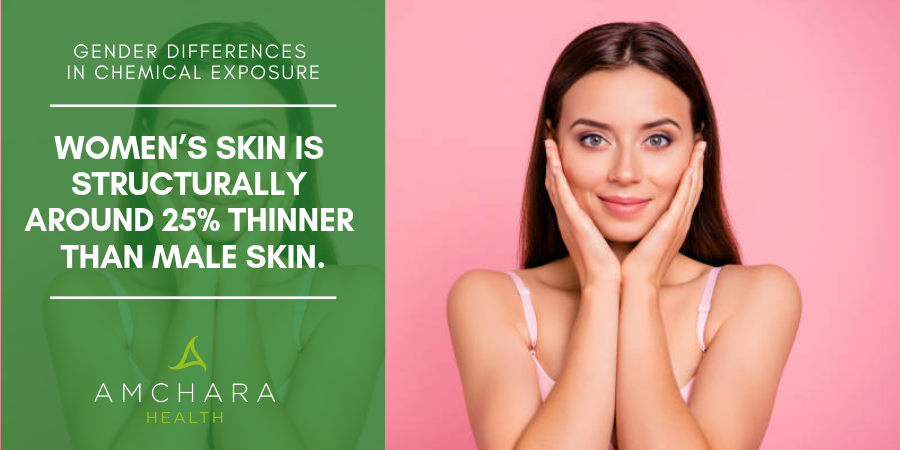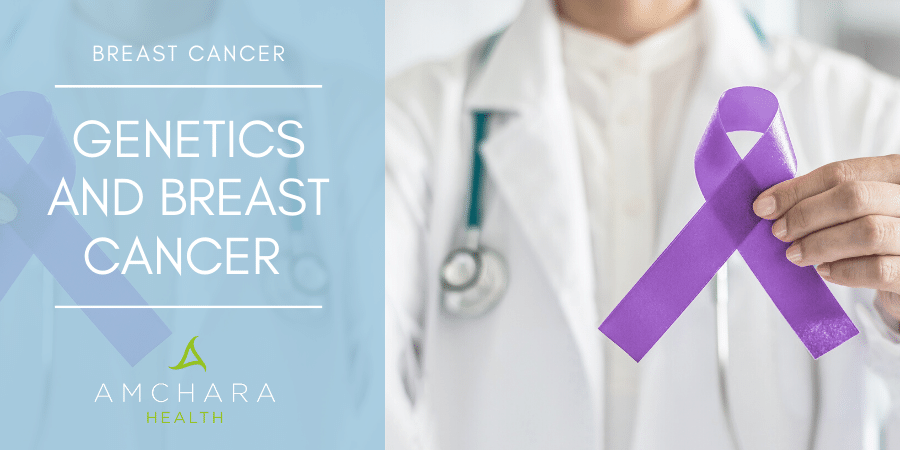Topics Covered in this article:
At the risk of stating the obvious, men and women are built differently.
Women have a different body shape, we have disparate hormone levels, we are usually not as tall and we weigh less.
So would it surprise you to learn that men’s and women’s bodies react differently to chemicals?
These differences haven’t always been considered by those involved in the testing of chemical substances.
In the modern internet world there is an overwhelming amount of information and it can be hard for you to find health advice that you can trust, particularly as the main media channels are typically dominated with a single, orthodox narrative.
Our mission is to provide you with insightful information. We always take an evidence-based approach and aim to provide you with actionable knowledge and tips to help you on your journey to optimal health.
This article will look at some of the ways in which women are more at risk from chemicals in our environment – and what we can do about it.
Safety testing – it’s a man’s world
When we put any manufactured substances on our skin or breathe them in through the air, we’re placing our trust in the manufacturers of those products.
We need to be sure they have been thoroughly tested to ensure they will have no adverse effects on our health.
Whether it’s cleaning or skincare products or fumes from an industrial plant, we know there are rules and regulations ensuring they are safe to be exposed to.
Although the testing of such products is rigorously controlled by law, what’s not common knowledge is that the results of these studies may not be relevant to women.
This is because despite 50% of the world population being female, until the last 25 years or so testing was carried out on an ‘average’ person.
This ‘average’ person has a typical male height and body weight.
Females have not historically been studied by toxicology researchers.
Things have changed recently, with women now routinely included in clinical trials for drugs.
However, even today, much preliminary research carried out on animals either excludes female subjects or doesn’t differentiate the results by gender, lumping the results together as if males and females respond in exactly the same way.
Scientists tend to rely on data from experiments carried out on males or a mix of genders and assume they will also apply to females.
All this means that the gender-specific effects of chemical exposure have been overlooked.
As women strive for equality in society, they remain genetically different from men.
New science is finding the chromosomes in every single cell of our body don’t simply determine our gender, they also influence the functioning of each and every body cell.
It’s no wonder these differences in male and female bodies mean we absorb and process chemicals differently from our male counterparts.
Our mission is to provide you with both insightful information and evidence-based content, all orientated towards the Personalised Health approach, with actionable knowledge and tips to help you on your journey to optimal health.
We’ll now go on to have a look at some of these gender differences.
Women have a different fat ratio
Women have a higher percentage of body fat than men.
Body fat content stands at 25% for an average woman, compared to 15% for men.
The body tends to store toxins in body fat, so women accumulate a greater toxic load than men (1).
Women’s fat is also stored in different places.
It’s thought this might partly be connected with the alarming recent rise in rates of female breast cancer – an increase of 25% in the 20 years between 1993/5 and 2013/5, according to Cancer Research UK.
In addition, women tend to have a lower body weight, which reduces the amount of chemicals they can be exposed to safely.
Women have different hormones
Male and female hormone systems are different, which means certain chemicals affect women differently.
Many chemicals contain substances which can act as endocrine disruptors.
Research has noted women’s physiology means they are more biologically sensitive than men to many pesticides currently in use.
Many pesticides are known to have oestrogenic effects.
The UN has acknowledged a strong connection between pesticides and breast cancer.
In many parts of the world, the majority of agricultural workers are female.
In the UK, one profession traditionally dominated by females is floristry.
One study asked florists to wear cotton gloves while handling flowers – which are routinely treated with chemicals to deter insects.
In fact, growers of flowers destined for the cut flower market are amongst the heaviest users of pesticides.
After just two days, an average of 37 different pesticides and fungicides were detected on the gloves (2).
But wearing gloves is often impractical as it decreases dexterity.
Many florists suffer from dermatitis, but the health effects of their profession may be more widespread.
Women firefighters in California have been found to have a six-fold higher risk of breast cancer than the national average in their age group – seemingly due to exposure to chemicals in the course of their job.
Research has also shown women working in plastic processing industries have higher rates of the disease than the general population (3).
Women have thinner skin
We’re not talking about emotional sensitivity here.
Women’s skin is structurally around 25% thinner than male skin.
This is because male hormones cause the skin to thicken.
After the menopause, female skin thins still further.
This can lead to chemicals and other toxins being more easily absorbed through the skin in women, especially post-menopausal women.
On average, women use twice as many personal care products as do men.
Research by the US Environmental Working Group found US women were applying an average of 168 chemicals to their faces and bodies every single day!
The average woman uses 9-12 personal care products daily, while teenage girls, who are at a critical stage in their hormonal development, often use more than this.
The effect of chemicals on the development of mammary glands has not routinely been explored in scienctific research.
Women carry out different activities
The world is changing in this regard, but there’s still a long way to go.
We’ve already mentioned florists, but many industries traditionally dominated by women, such as nail bars, female hairdressers, make up artists and cleaners, bring the worker into direct contact with a great deal of chemicals.
Most of these will have been tested only in isolation and not alongside each other.
The research behind the cumulative effects of chemicals on women is largely lacking.
Research has shown manicurists, hairdressers and makeup artists die more often from certain cancers, suffer from more lung problems and tend to have babies with lower birth weights.
The problem is, although the chemicals in the products used throughout these working women’s days have been tested and deemed safe on consumers, they aren’t tested for safety from continuous, multiple exposure over many years.
Meanwhile, certain ingredients in hair dyes, called aromatic amines, have been linked to an increased risk in bladder cancer.
One recent study looked almost 300 female hairdressers and found that despite aromatic amines having now being banned in hair products throughout the EU, detectable levels of one specific amine called o-toluidine were found in hairdressers who used permanent hair lightening products and hair weaving products on their clients (4).
O-toluidines have been shown to be carcinogenic, particularly in relation to bladder cancer.
Once the worker goes home, they will most likely be exposed to more chemicals as the lion’s share of household cleaning tends to still rest on the shoulders of women.
One 2014 survey in the US revealed women perform as much as 70% of household cleaning.
With regard to cleaning as an occupation, again in the US, 89% of professional home and hotel cleaners were women.
Radiating concerns
Another area of concern is that of ionising radiation.
This is the type of radiation emitted naturally from soil, water and vegetation, but also from x-rays and medical devices.
We know long-term exposure to ionising radiation can increase our risk of developing some cancers.
Research has found women exposed to radiation during childhood are ten times more likely to develop cancer than would be predicted for the population as a whole, and women are 50% more likely to develop cancer from acute exposure to radiation than men.
It therefore seems men are more resistant to harm from radiation (5).
More women are employed as hospital and dental nurses than men, industries which regularly expose workers to small doses of radiation.
A national study involving nurses in the US linked the exposure to radiation and pharmaceuticals with cancer, asthma and reproductive issues (6).
With respect to radiation, scientists again rely on a typical, average ‘Reference Man’, who is white and aged between 25 and 30 years old.
Women have different immune systems
Research has shown differences between the male and female immune systems.
Generally, women have stronger immune systems than men, which is great for increasing our resistance to pathogens but puts us at increased risk of auto-immune disease.
This means women are more likely to suffer from allergic reactions to extraneous chemicals.
The majority of people suffering from multiple chemical sensitivity are women, and the incidence of asthma is higher in women.
All this means women can potentially be more affected by chemicals than men.
Women feel the cold
So this isn’t particularly relevant to chemical exposure, but did you know women feel the cold more than men?
One recent study looked at why female office workers may be bundled up in scarves while their male co-workers are in short sleeves.
The reason for this is women’s metabolic rates are typically significantly lower than those of men, even when they are carrying out exactly the same activities (7).
Research has estimated women’s metabolic rates to be up to 32% lower, largely because women usually have a smaller body size and a greater proportion of body fat and therefore produce less body heat.
There exists a standard formula still used today for an acceptable office temperature – a ‘comfort equation’ which was developed in the 1960’s using the resting metabolic rate of Mr Average, a 40-year old man.
It was designed to make the office environment as comfortable as possible for the largest percentage of users – which in those days, would usually have been largely male.
So even nowadays, office temperatures are based on research from 50 years ago taking into account the body heat produced by men.
In this temperature, Ms Average will feel decidedly chilly – typically, it will be a massive 5 degrees too cold for women.
In one study, researchers found women feel drowsier and more uncomfortable than men at high and low temperatures (8).
In another study, carried out in Finland, researchers found women felt uncomfortably cold in their office environments 40% of the time, compared with men who felt cold 16% of the time.
Although Finland has a cool climate, it’s likely similar findings would be reported in hot countries, where many women will relate to finding the AC turned up too high for comfort.
Being permanently cold can lead to poor concentration, lack of productivity and even a lower immune system.
How to reduce the risk of chemical exposure
Given that women run a higher risk of exposure to chemicals and their health is potentially more affected by them, avoidance is key.
Women and men should hoose chemical-free alternatives such as personal care products, household cleaners and cosmetics, and wear gloves if you’re exposed to these chemicals in the course of your job.
A diet high in colourful plant foods will deliver a broad range of antioxidants which are crucial for our detoxification systems.
Supporting hormonal and liver health can help our bodies deal with the effects of chemical exposure.
Takeaway
Here at Amchara we believe one size does not fit all, particularly with regards to health.
A personalised health consultation or a juice cleanse at an Amchara retreat can help support your detoxification systems and so naturally maximise your health.
We’re dedicated to providing you with both insightful information and evidence-based content, all orientated towards the Personalised Health approach.
Did you find this article useful?
We would love to know your thoughts on gender differences and how they may affect our health and wellbeing.
With your comments, we’d love to continue the conversation.
By Cathy Robinson BScDipNutMed
READ THIS NEXT:






